
Where We Be
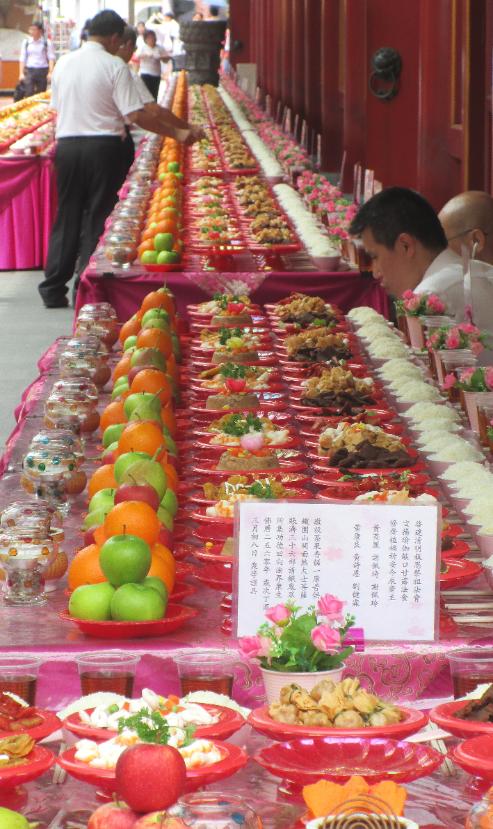
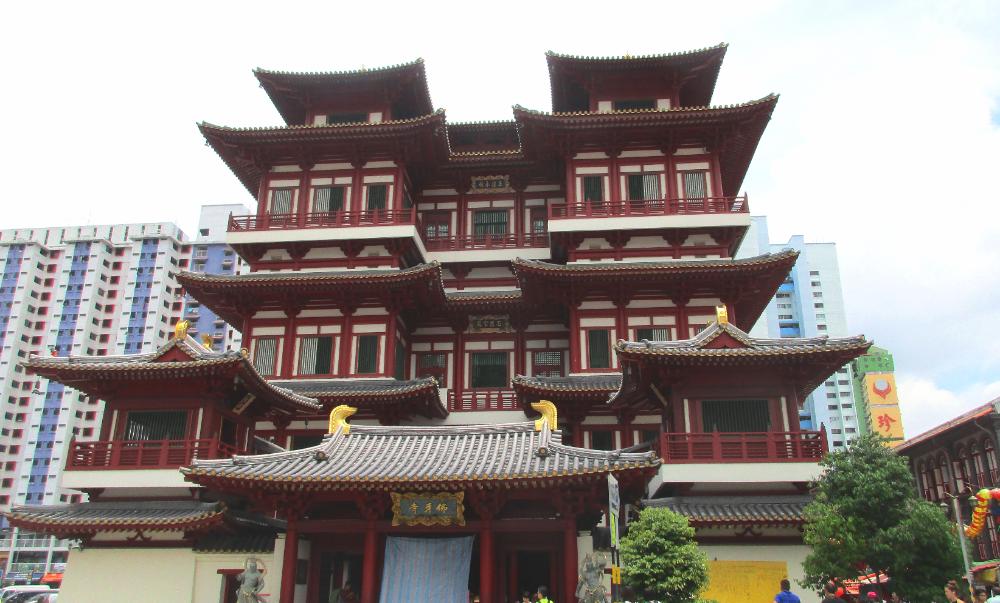
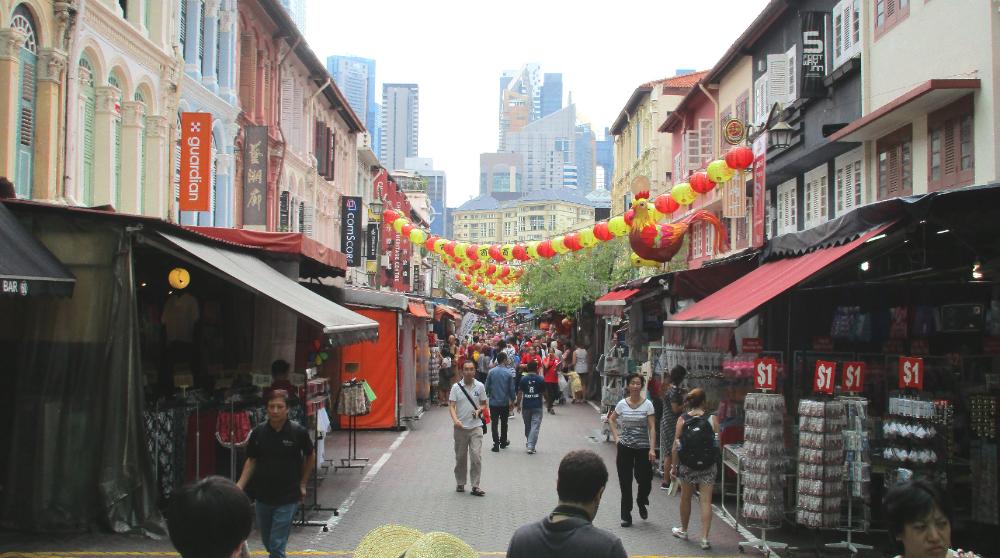
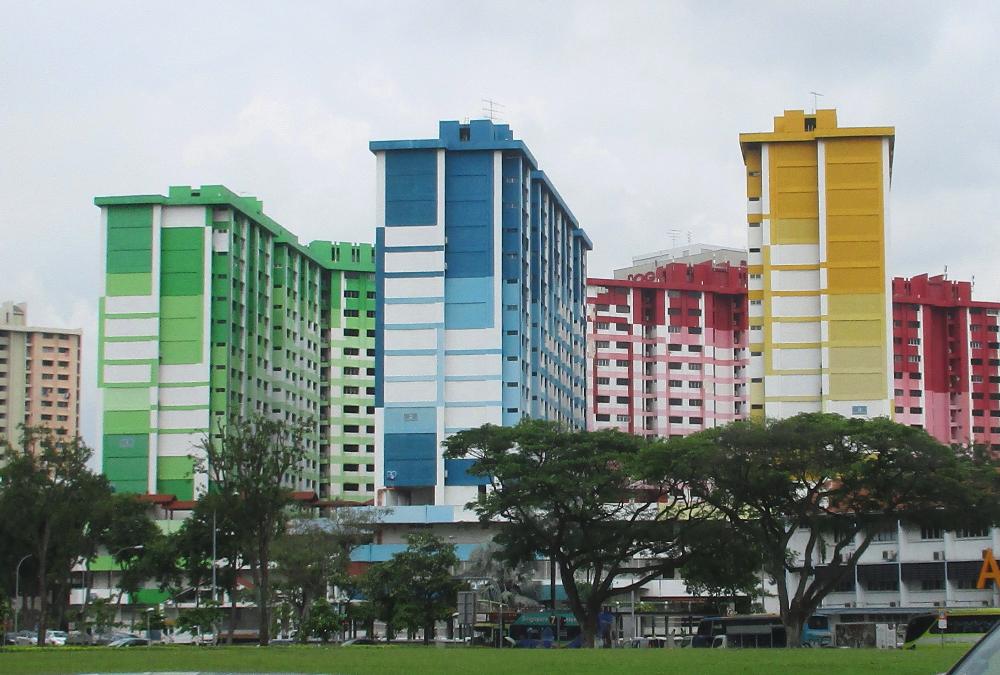
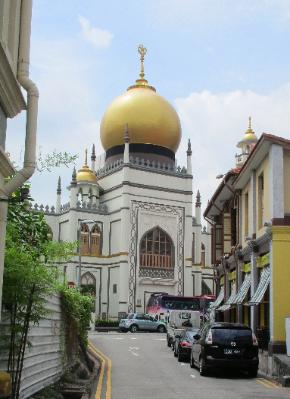
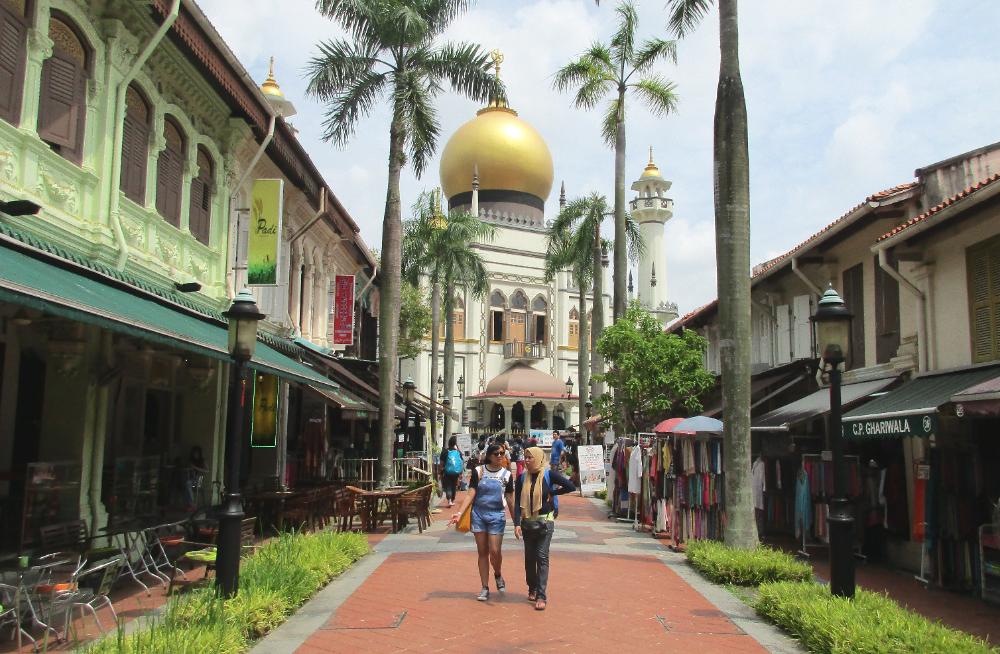
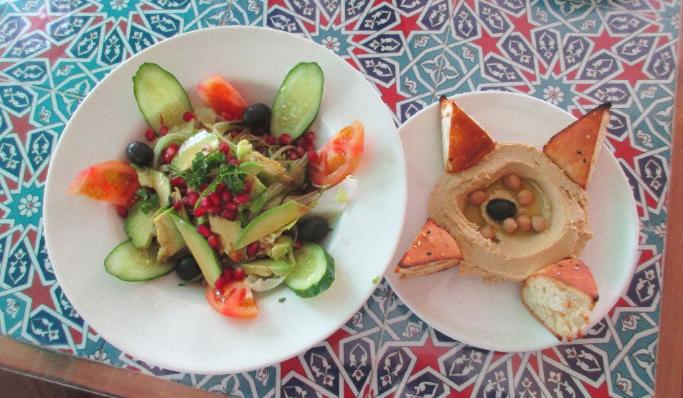
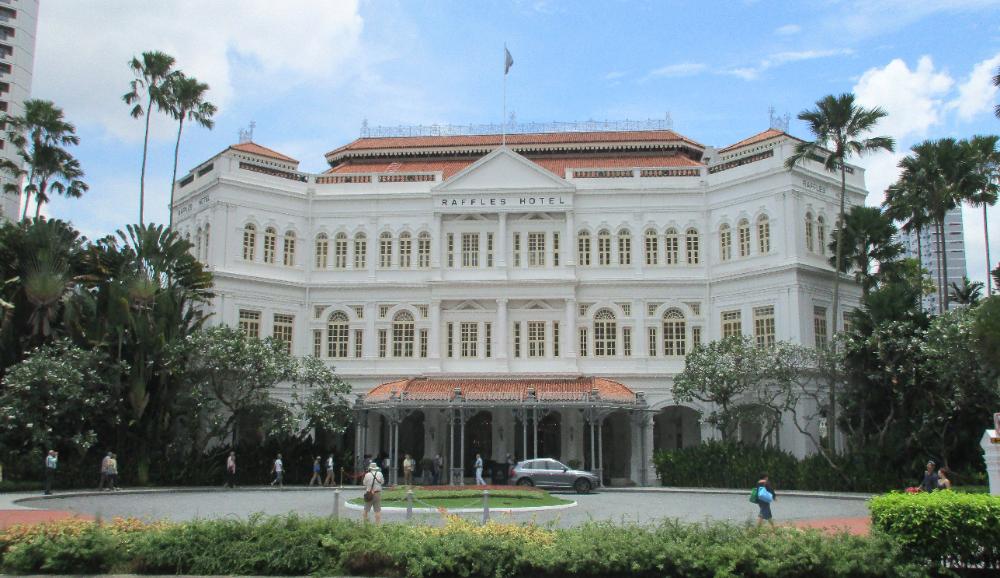
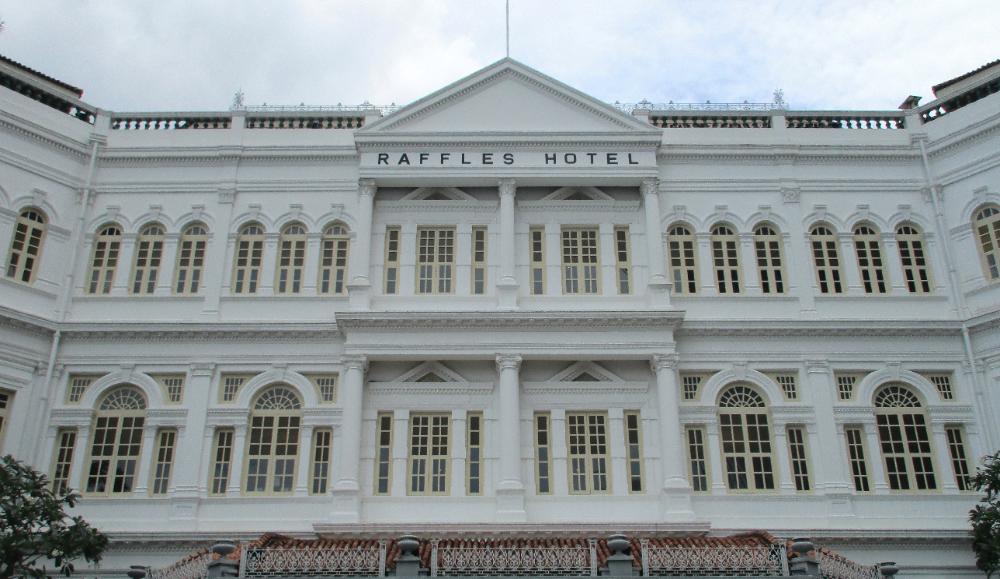
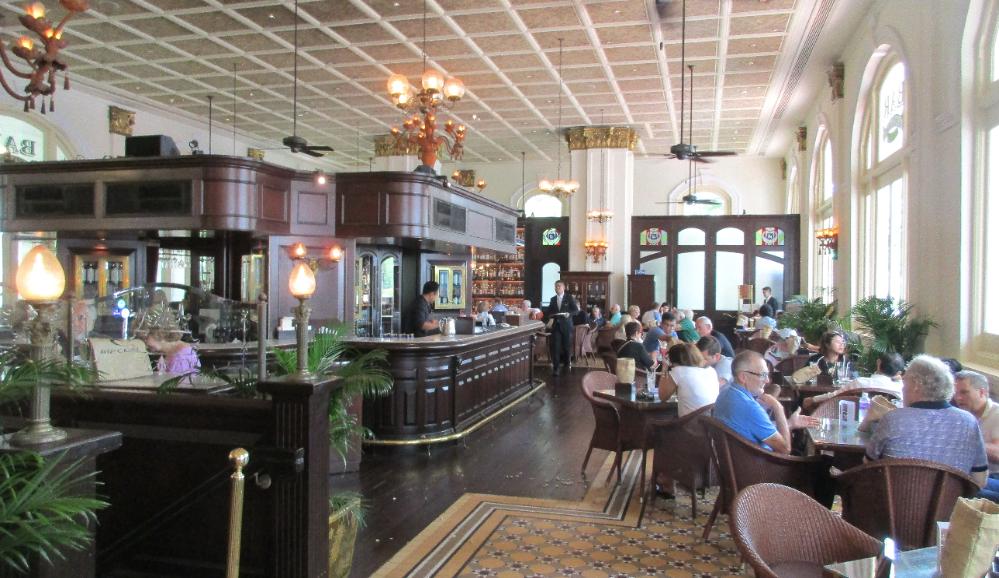
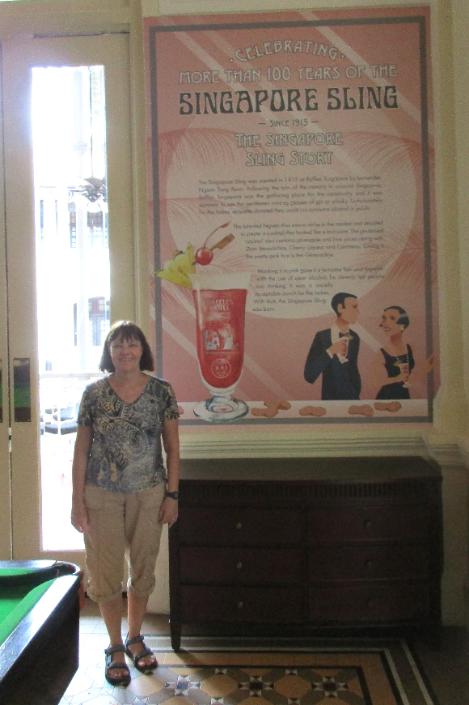
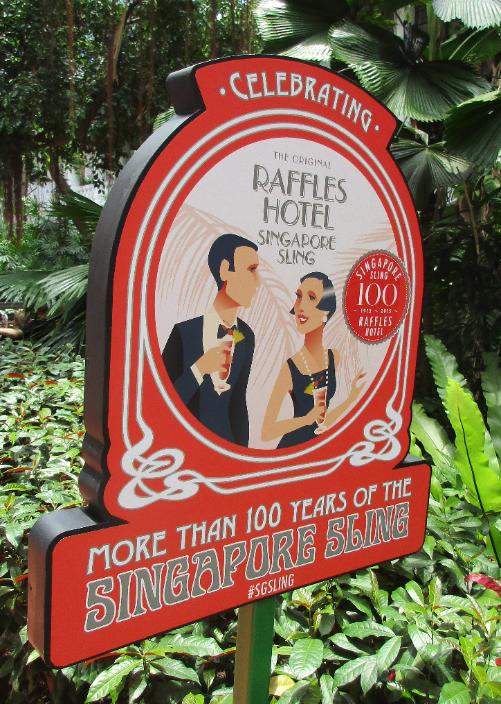
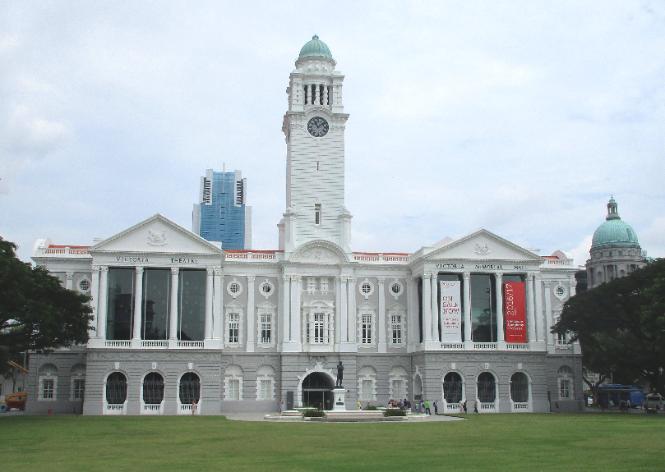
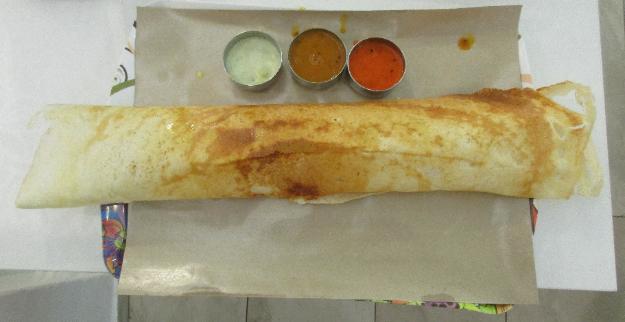
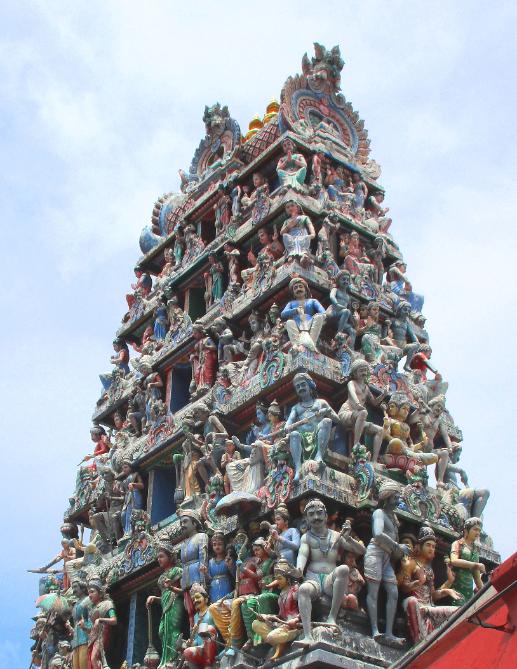
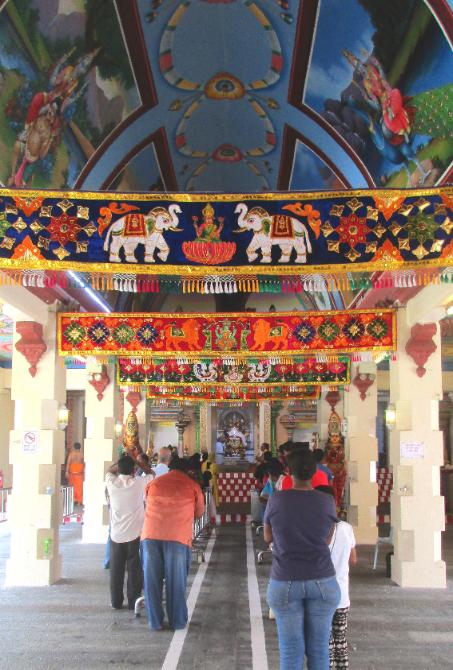
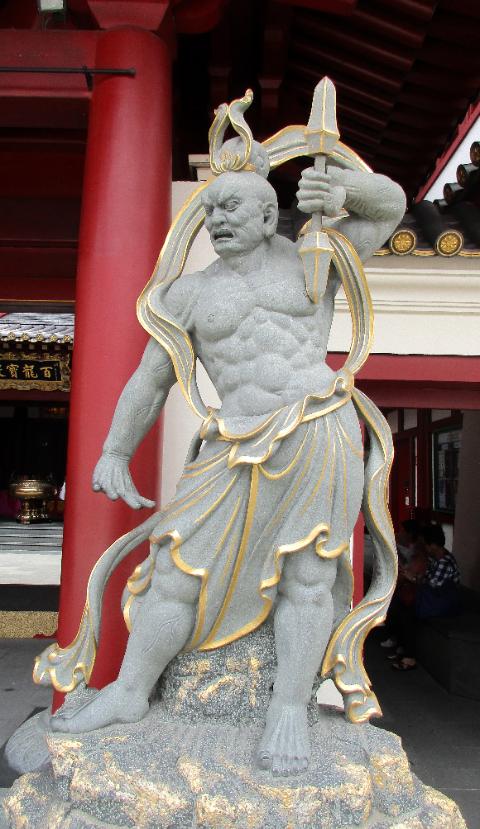
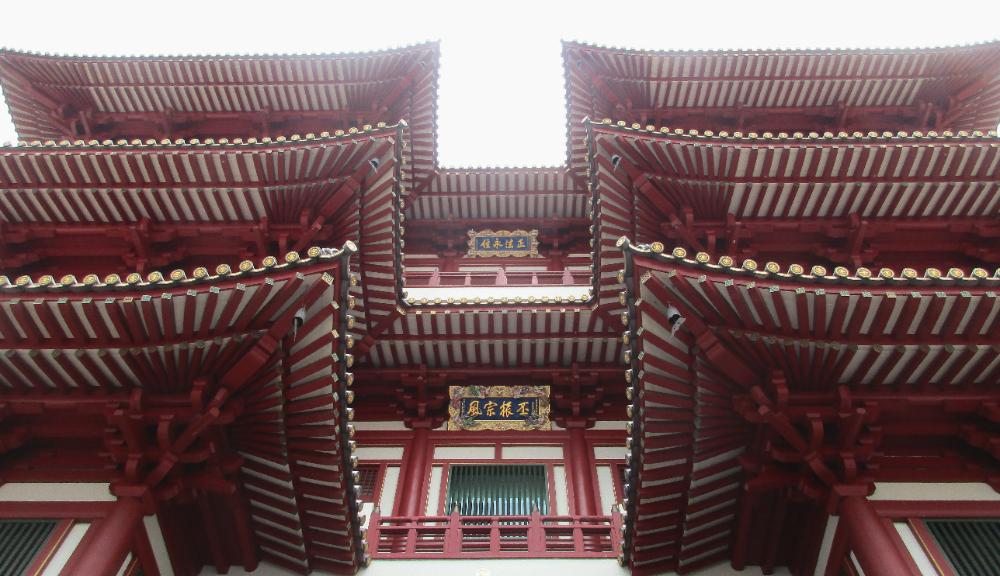
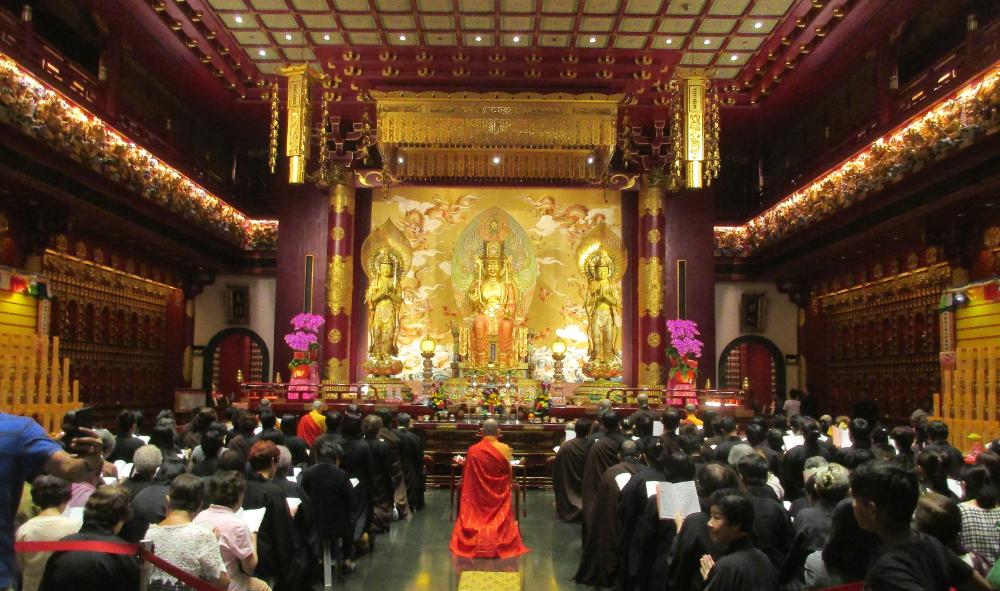
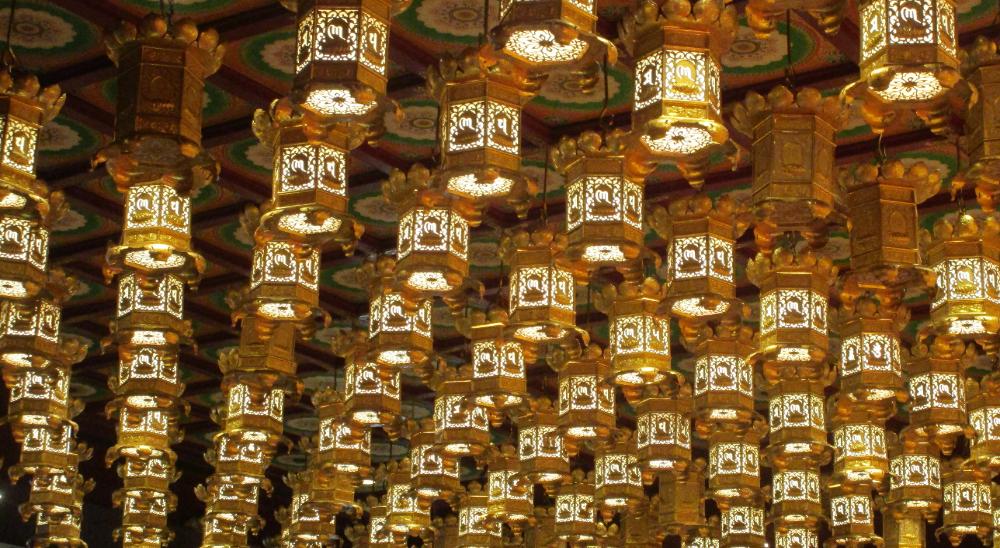
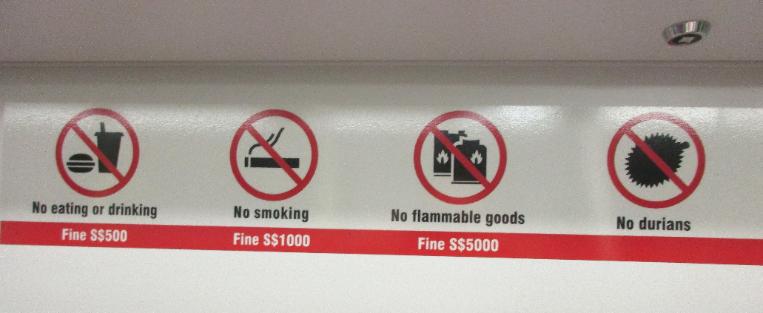
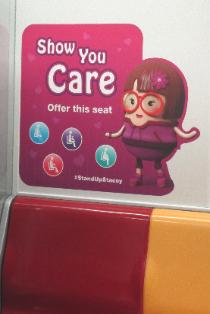
| Outside Buddha Tooth Relic Temple in Singapore's Chinatown was the longest and most colorful table of offerings we've ever seen. Even the locals seemed impressed. |
| Singapore Neighborhoods |
We spent a full day exploring some of the most
culturally vibrant neighborhoods of Singapore --
specifically, the Colonial Center, Kampong Glam
(the Muslim quarter), and Chinatown. The city is
big enough and temperatures hot enough that
walking between neighborhoods isn't always
practical, so the better way to go is to buy a
three-day Singapore Tourist Pass for SD 20
($15 US) which gives you unlimited use of the
fantastic metro system.
We stayed in Little India, the most affordable
neighborhood in Singapore that's still close to
all the action. It's well serviced by the metro so
getting around is a breeze. Our first stop was
Raffles Hotel, the iconic symbol of Singapore's
colonial days with its Billiards Bar and Long Bar,
home of the Singapore Sling. After exploring
the Colonial Center we visited Kampong Glam
to see Masjid Sultan Mosque and wander down
Arab Street and narrow Haji Lane. Our last stop
was Chinatown, where we visited the strangely
named Buddha Tooth Relic Temple and let
ourselves get lost down narrow shopping lanes.
culturally vibrant neighborhoods of Singapore --
specifically, the Colonial Center, Kampong Glam
(the Muslim quarter), and Chinatown. The city is
big enough and temperatures hot enough that
walking between neighborhoods isn't always
practical, so the better way to go is to buy a
three-day Singapore Tourist Pass for SD 20
($15 US) which gives you unlimited use of the
fantastic metro system.
We stayed in Little India, the most affordable
neighborhood in Singapore that's still close to
all the action. It's well serviced by the metro so
getting around is a breeze. Our first stop was
Raffles Hotel, the iconic symbol of Singapore's
colonial days with its Billiards Bar and Long Bar,
home of the Singapore Sling. After exploring
the Colonial Center we visited Kampong Glam
to see Masjid Sultan Mosque and wander down
Arab Street and narrow Haji Lane. Our last stop
was Chinatown, where we visited the strangely
named Buddha Tooth Relic Temple and let
ourselves get lost down narrow shopping lanes.
| We stayed at Hotel 81 Dickson ($69 per night) and came to love the location for its close proximity to both the metro and inexpensive restaurants -- hardly a given in Singapore |
| There aren't many sights per se to see in Little India, but it makes a convenient and affordable base for exploring Singapore |
| Hop off the metro and find yourself in another part of the world! This is Kampong Glam, the Malay-Muslim Quarter of Singapore. Masjid Sultan Mosque is the most notable sight here. |
| We wandered down narrow alley-like streets -- Arab Street and Haji Lane being the most memorable. Eventually we settled on a Turkish restaurant for lunch. |
| We just had to see Raffles Hotel, the famous colonial style luxury hotel built in 1887. It's named after Singapore’s founder, Sir Stamford Raffles. |
| This was THE place to be in the early 1900's. Writers like Somerset Maugham and Rudyard Kipling stayed here. |
| Inside you can visit the Long Bar and Billiards Bar. Electric lights and powered ceiling fans were a first for any hotel in the region. |
| This is the home of the Singapore Sling, a gin-based cocktail developed around 1915 by a bartender from Hainan, China working at the Long Bar |
| The Colonial Center is surrounded by taller buildings in more modern parts of Singapore, but here there's still plenty of greenery and colonial architecture. Above is the Civilian War Memorial (dedicated to victims of the Japanese Occupation during World War II) and the Victoria Theatre. |
| Here's one example, Vel's Curry, where we got to try ghee rost -- a paper-thin dosa from Southern India with three dipping sauces -- Yum! |
| Another quick metro ride and we found ourselves in Chinatown. This was the view as we emerged from the metro station. |
| We also visited Sri Mariamman Temple, a Hindu temple right in the midst of Chinatown -- a good reminder that the different quarters of Singapore aren't hard and fast but blend together in interesting ways. There was an active prayer service here, too, with "jazzy" trumpet-like music being played. |
| The most notable site here is Buddha Tooth Relic Temple. It's an impressive Tang-style temple housing what is claimed to be a tooth of Buddha found in 1980 in a collapsed stupa in Myanmar. |
| You can see the tooth relic on the fourth floor, but our main reason for coming was the cool architecture of the temple itself |
| An active prayer service was going on when we visited, so we got to hear Buddhist chanting with accompanying gongs and triangles. We were surprised by the number of parishioners here on a Tuesday afternoon. At one point they all got up and circled through the temple doors before returning to their seats. |
| We're suckers for Chinese lanterns, and we've never seen a prettier display than this one on the ceiling of Buddha Tooth Relic Temple |
| We weren't the only ones who stopped to take a look at all the tempting offerings on display outside the temple -- but perhaps the fierce guardian statues kept anyone from touching. |
| Don't bring dosas or any other food or drink onto the metro or risk a fine of SD 500 ($360 US). Notice the "No Durians" sign -- you'll see them throughout Southeast Asia where these odiferous fruits are commonplace. |
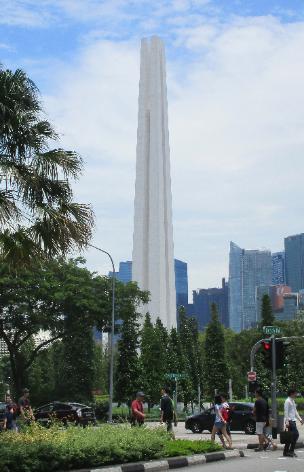
| Kampong Glam |
| Chinatown |
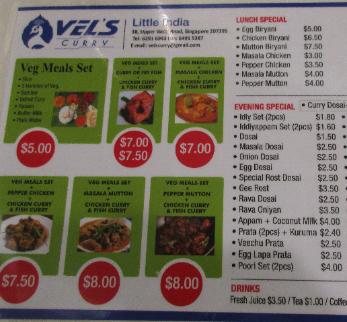
| Little India |
| Colonial Center |
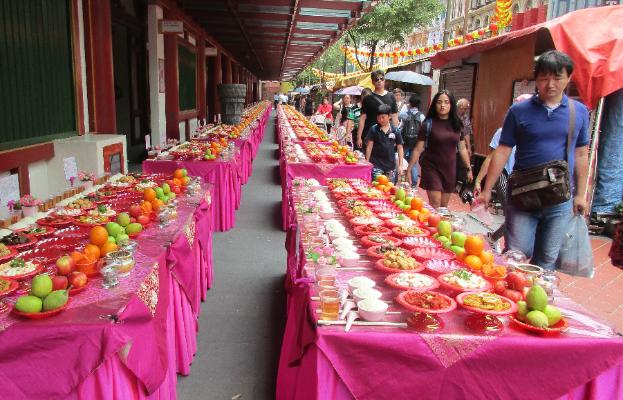
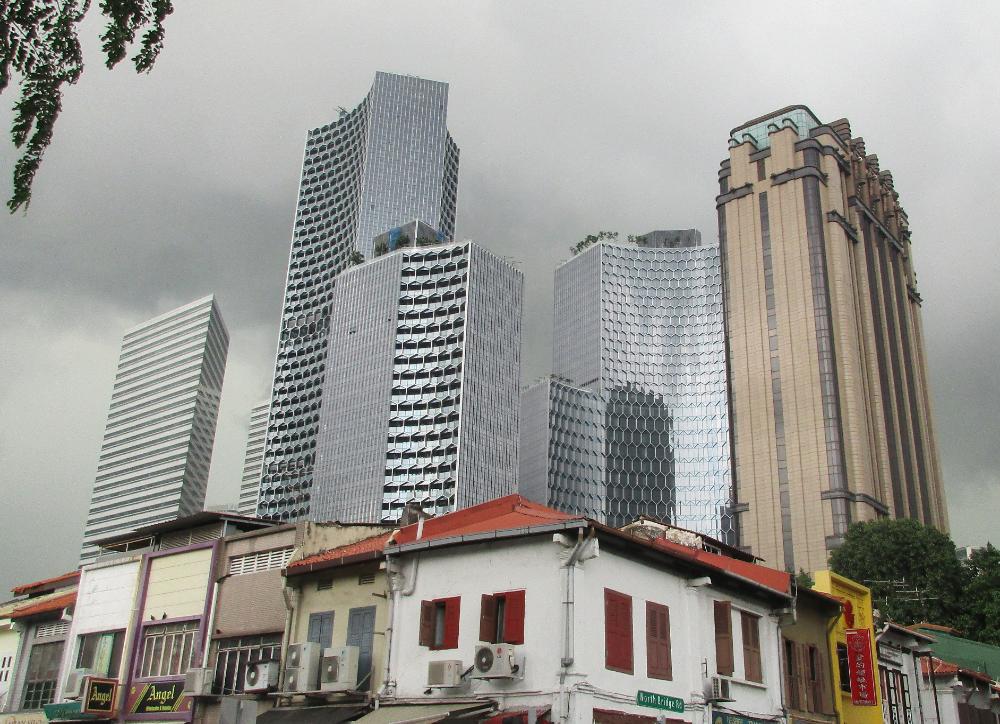
| Old and modern rub shoulders often in Singapore. Here you can see skyskrapers and small shop fronts existing side by side. |
| Another common sight is this "Show You Care" metro post |
